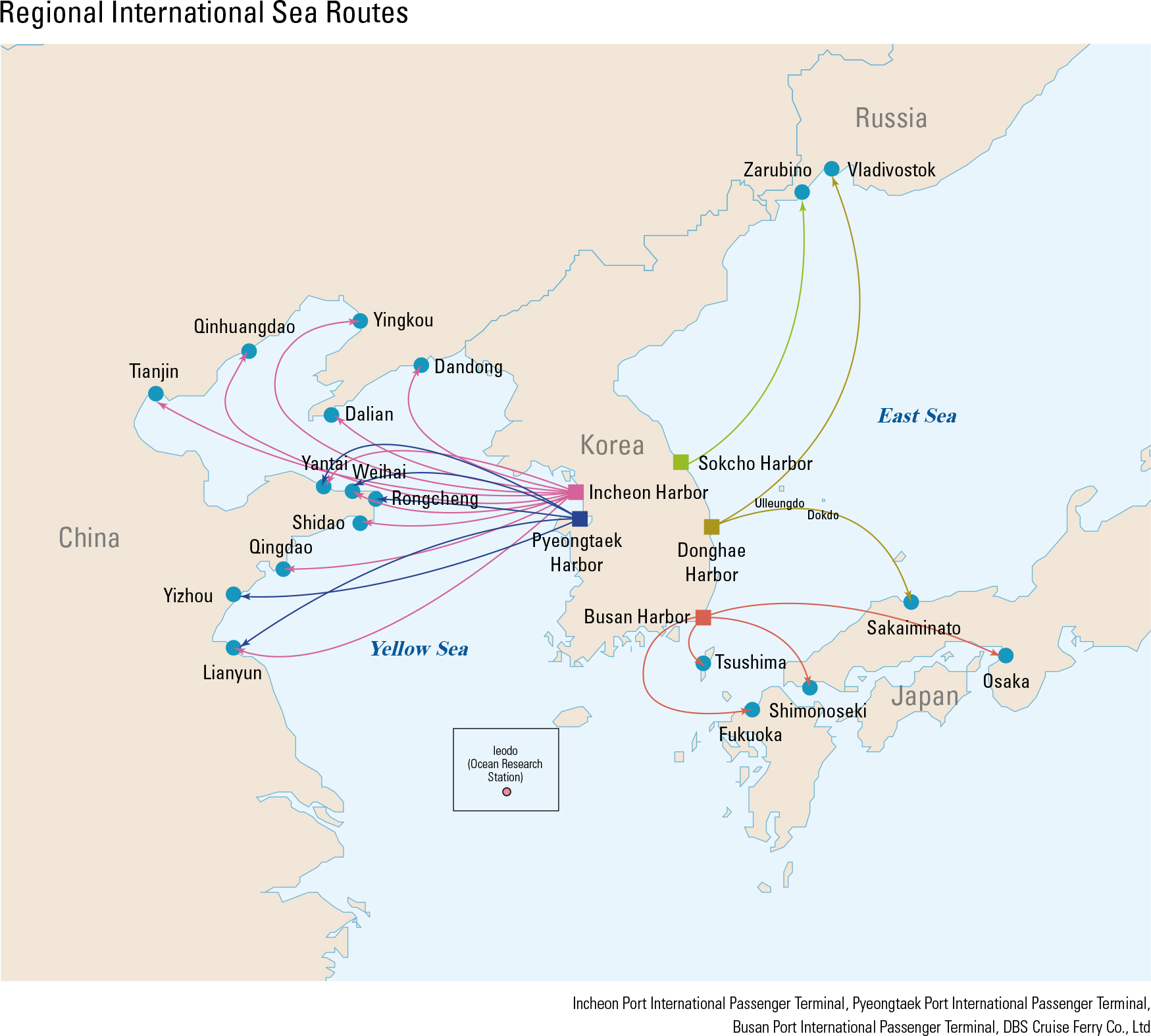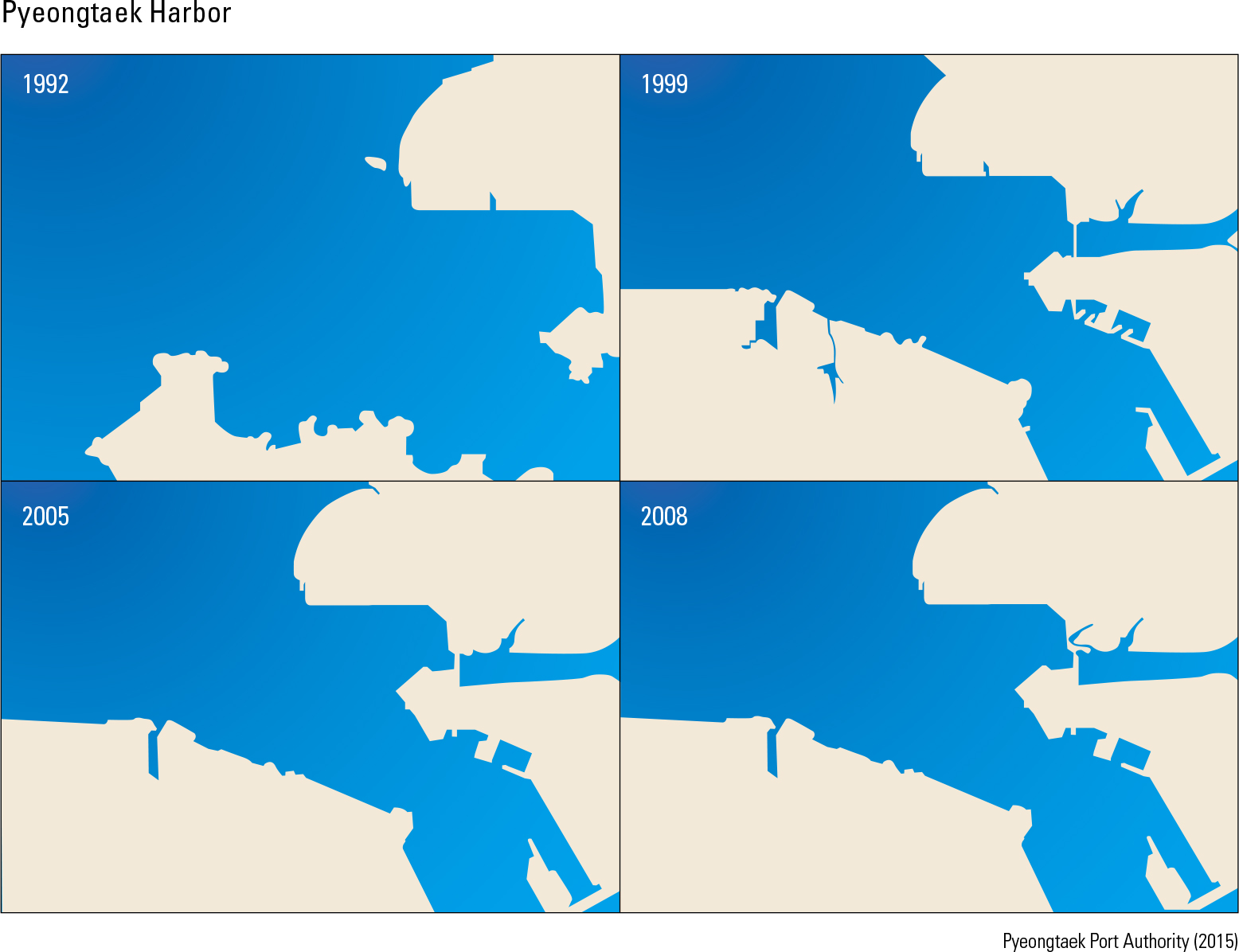English II
Following the rst stage of the Incheon Harbor development from 1973 to 1978, the second stage was held from 1981 to 1985, during which a grain terminal, silo facilities, and an 8th pier were con- structed. Trade between Korea and China has since increased in accordance with China's rapid eco- nomic growth, along with the designation of the Free Economic Zone and the extension of the port logistics complex. Incheon Harbor also established ten international passenger sea routes between Korea and China and set a record of more than one million international passengers in the year of 2011. Furthermore, the harbor contributes to the maritime transport service by running twelve sea routes to coastal islands. Pyeongtaek Harbor is a newly-constructed port that opened 110 to 120 years later than Busan and Incheon Harbor. It initially opened in 1986 but only served as a port for processing oil shipments. Since then, it transformed into a business speci c harbor to replace the growing container traffic of Incheon Harbor, and finally began to fully take on the role of a commercial trade port in the late 1990s. Pyeongtaek Harbor holds a development history that is greatly different from those of other harbors. While the others were actively promoted by the leading role of the state (the central govern- ment) and received a variety of policy support from the beginning, Pyeongtaek was developed by the local government and was able to achieve short- term success as a fast-growing port due to external factors, such as the economic growth of China. Currently, it has 62 port facilities and performs the role of a general trade port that can handle passen- gers and a wide range of cargo. It has 35 general piers, 3 car terminals, and 8 passenger terminals. Mokpo Harbor was used as a base for the mass exploitation of textiles and grains during the Japa- nese Colonial Period. Traces still remain of a Japa- nese enclave that was located in the region around the harbor. Following the restoration of Korean independence, Mokpo Harbor was divided into the North and South Ports according to their respective functions. The North Port was developed as a sh- ery product-only port, while the South Port served as a passenger-only and cargo-only port to Sam- hakdo. Today, the Mokpo Coast Passenger Termi- nal and Mokpo International Passenger Terminal have been constructed and are in the process of de- veloping various international sea routes, including one to Shanghai. Busan Harbor is the oldest harbor in Korea. As its facilities were insufficient to handle the rapid increase in container traffic that accompanied the sudden economic growth, cargo had to be pro- cessed at the normal port instead of the container port. The dilapidated conditions also led big ship- ping agents to avoid using the harbor. To respond to this, Busan Harbor began constructing a new port on Gadeokdo speci cally for handling large- scale containers in October, 1997. The Busan In- ternational Passenger Terminal currently operates a ferry between Busan and Japan as well as a cruise line between Busan and Jejudo.
page_2 |




